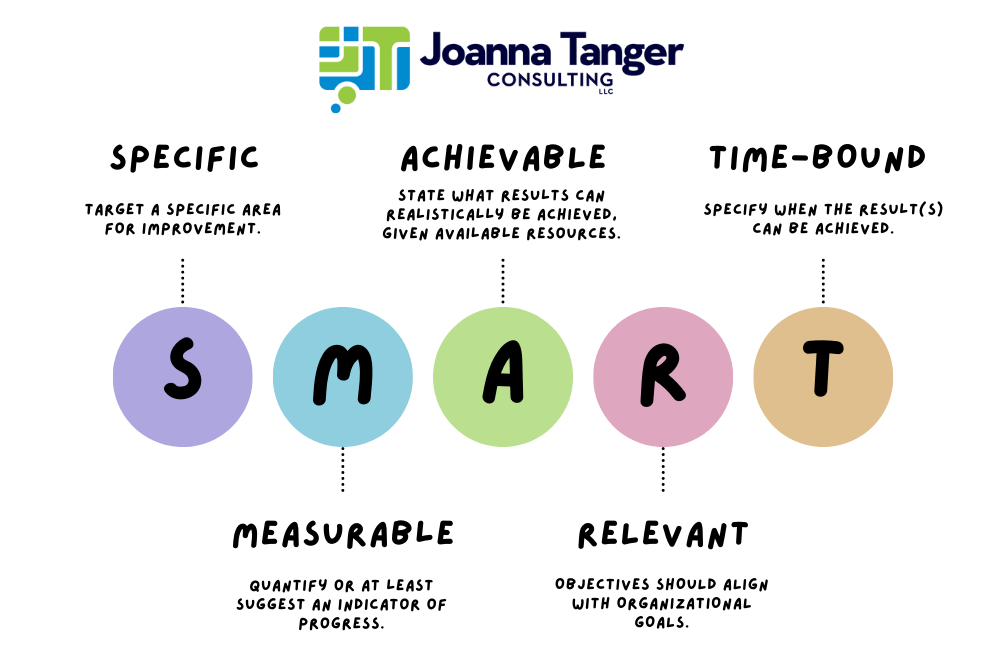 Many organizations prioritize their external communications over internal communications. While external communications with customers, donors, partner organizations, and other key stakeholders are important, internal communications are essential to foster a transparent work environment, ensuring employees are well-informed and happy. So how do you develop an internal communications plan that keeps employees engaged, happy, and enhances collaboration? Below are a few ideas on how to get started. Determine who is responsible for sending the communications. Who owns the internal communications? Is it HR? The communications team? Be sure it is clear who is responsible for owning the lists, collecting content, and updating/sending out communications. Define your goals. First, clearly define the goals of your internal communications plan. Is the goal to keep employees engaged? Share company updates? Celebrate employees’ wins? Knowing what your goals are prior to creating the plan will ensure your plan stays focused. Identify your target audience. Would the communications go to all employees? Would there be different segments or content for specific groups? Knowing who your target audience is will help you to better organize your communications and ensure they are valuable for your teams. Select the right communication channels. Just because one platform works for another organization does not mean it will be effective for yours. Survey or talk to your employees to see how they’d like to receive company news and internal communications—whether it’s through email, Slack, or an intranet. Create your key messages. Are there specific messages you’d like to include? Internal communications are a great place to share department wins, provide talking points, or highlight brand guidelines. Any key messages should align with your organizational goals and values, and internal communications provide an excellent platform for ensuring everyone at your organization is using similar key messages when speaking with external audiences too. Establish a regular cadence. Determine the frequency you’d like to share internal communications. Perhaps internal emails go out every other Friday? Determine a regular schedule and ask for employee content contributions by a certain day. Include engaging and valuable content. Include a mix of updates, success stories, and important announcements. Keep the content fun and engaging, and don’t forget to include multimedia. Encourage feedback. Be sure to ask for suggestions/content ideas and include surveys. These foster two-way communication, which boosts employee engagement. Establish key performance indicators (KPIs). KPIs are valuable to measure the effectiveness of your internal communications. For example, KPIs could include employee survey responses, email open rates, or verbal feedback from team members. As always, be flexible. The key to any successful communications and marketing plan is to be willing to pivot or try new channels or tactics. If your internal communications are falling flat, ask your employees what they’d like to see. Flexibility is key. Need help getting started on your internal communications plan? Email [email protected]!
0 Comments
Guest Blog Post: Why Virtual Volunteering is the Future & A Few Opportunities to Get You Started5/7/2024 I wrote a guest blog post for VolunteerMatch on virtual volunteering. Please read it here.
Have you been a virtual volunteer? If so, I'd love to hear more about it. Where did you hear about the opportunity? What were the pros and cons of volunteering remotely? Send me an email at [email protected]. Let's suppose one of your organizational goals is to increase revenue this year. To determine if communication efforts are successful, an organization/company needs to measure progress. However, vanity metrics—such as the number of Facebook followers—do not provide much intel into how valuable communications are overall in reaching this goal. So how do you know which metrics to track and how do you measure for success?
To ensure that an organization is successful in reaching their goals, SMART objectives are essential. SMART objectives are specific, measurable, achievable, relevant, and time-bound. Here's a sample SMART objective: Increase return traffic to the website by 10% by December 31, 2023 Once you've created a SMART objective, tie it to a desired business outcome. Did you know that return website visitors are much likelier to participate in revenue-generating activities? A return visitor has demonstrated their interest in your organization/company. So, increasing the number of return website visitors means the organization is engaging with those who are already past the awareness stage and are ready to take the next action step (signing up to receive emails, making a donation, etc.). Regular review of Google Analytics can help you monitor progress. By proactively linking communication outreach with strategic organizational goals—and monitoring data regularly—an organization sets itself up for future success. In addition, SMART objectives help keep teams engaged and clarify how their work directly impacts the organization. I can help determine which objectives work best for your organization/company, as well as create plans for how best to measure your efficacy. Please get in touch today! Often, we get caught up in our day-to-day work and forget to take a strategic, big picture approach to our communications and marketing. Is current outreach working? Are audiences resonating with current messaging and communications? Before I start designing a strategic marketing or fundraising plan for clients, the first step is often to create a communications and marketing audit.
A communications and marketing audit is an in-depth, comprehensive look at an organization’s current marketing and outreach to determine if efforts are effective and to see what can be improved. Think of a communications and marketing audit as an annual physical; a doctor needs to see the state of your general health in order to make recommendations. In an audit, I review an organization’s website, social media platforms, email marketing tools, CRM, online ads, and recent press coverage. I look through an organization’s Google Analytics, Google Ads data, email marketing metrics, social media analytics, and press coverage links. In some instances, I create surveys to get external audiences’ feedback. I determine who the target audiences are, which channels are most effective to reach them, whether or not the current cadence works, and write recommendations based on findings. An audit provides an overall look at an organization’s health. Measurable objectives and recommended ways to measure success are included in the audit. Aligning marketing or fundraising efforts to the greater organizational goals is essential for success. I can walk organizations through best practices when it comes to analyzing data and determining whether or not it’s time to pivot in the future. To schedule an introductory call and see if a communications and marketing audit is right for you, please get in touch today. I look forward to hearing from you. The good news is that email subscribers have already demonstrated an interest in your organization. The bad news is that a large email list doesn’t necessarily convert to a successful fundraising campaign. Here are five ways to ensure that your subscribers make a gift before December 31. (Don’t forget to add a catchy subject line to get their attention; action verbs are your friends here).
1. Tell a story that demonstrates the impact of your work. Story-telling is an excellent way to evoke an emotional response from donors and help them to feel connected to your cause. Many nonprofit fundraisers are close to their work and assume their audiences are as equally engaged. This time of year, individuals receive dozens of email appeals so yours needs to stand out. Share a story from someone who has directly benefitted from your services. Personal stories illustrate the impact of your organization’s work and help supporters to better understand how their gift will directly help others. 2. Ask for a donation and make it easy to give. This may seem basic but it’s amazing how many organizations bury their ask at the bottom of an email and write it as, “Please consider supporting,” rather than stating, “Please make a gift now.” An ask should be written as an action. You do not want readers to consider; you want them to give now. Use language that is concise and drives action. Each email should include a minimum of two or three asks and links to the giving form. For example, link the photo at the top of the email to the donation form, include a link right in the text, and add a button at the bottom. Motivate readers and make it easy to give. 3. Don’t overdo it. Determining the cadence of emails is a vital part of your strategy when designing a fundraising campaign. Analytics help you better understand the best days and times to send. It is essential to review analytics regularly throughout a campaign to ensure that outreach has been effective. For example, if your open rate drops significantly and your unsubscribe rate increases, those are clear signs that your messages are falling flat—or that you are sending too many emails. Donors should not receive daily emails from you; that is obnoxious and a guaranteed way to lose subscribers. Limit end-of-year fundraising emails to two or three the final week of December. For example, perhaps send one on December 27 and another on December 30. Post on alternating days on social media. Adding a sense of urgency and demonstrating your impact are more effective than bombarding your donors with multiple messages. 4. Segment your audiences and personalize your messages. Are you currently sending everyone the same fundraising messages? Don’t. Try segmenting emails by donation amount. For example, imagine asking a donor who has previously donated $500 for a $25 donation. You just left $475 on the table. Divide email lists into prospective donors, mid-tier donors, and high-net-worth individuals (HNWI) and tweak the language for each message. The amount you ask each donor group should vary. Also, don’t forget to merge their first name in the subject line or the greeting to catch their attention. 5. Thank your donors. Never underestimate the power of a thank you note. Plan to send an email in January, once the final donations are in. Share the final numbers and reiterate how much of an impact their donation will have as your organization prepares for the year ahead. By the way, remind your donors to forward your emails to friends and share your social media posts. Current supporters are your best ambassadors. When they feel appreciated, they are likelier to share your cause with their networks. Need help planning your fundraising campaigns? I can help! Email [email protected] and share what you’re looking for. |
Joanna Tanger
Founder/Consultant Archives
July 2024
Categories
All
|






 RSS Feed
RSS Feed